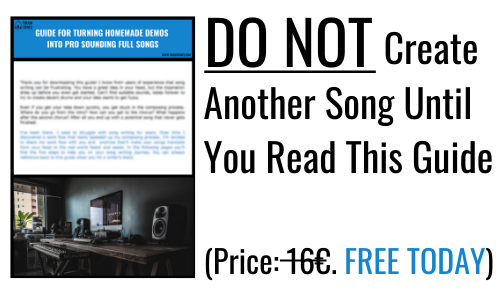The Power of Low Cut Filter – A/B-test
Low cut filter (or high pass filter – either way you want to call it) is the simplest thing you can do to a mix, but it’s super effective. It is a filter that removes low frequencies from an audio signal. Frequencies below the determined point are being cut. By applying low cut filter to a track, you’re getting rid of the unwanted low end rumble. It is one of the smartest things you could do to a mix as you’re freeing up headroom.
Sometimes it’s hard to hear what it’s doing, but that’s okay. I don’t claim to hear all the low end rumble that’s going on, but I know it’s there. If you know that a track doesn’t need the low end, cut it out. How much? To a point that it’s not changing the tone of the track drastically. Once you start hearing the low cut filter, dial it down a notch. As you apply the low cut filter to every track that doesn’t need the low end, you are definitely going to hear the difference in the big picture.
Low cut filter A/B-test
In this A/B-test you’re going to hear the difference. In the example 1, there’s no low cut filter on any of the tracks. Whereas in the example 2 the low cut filters are on. Otherwise they’re the same – nothing else is altered. I suggest that you listen with a pair of headphones or monitors as laptop speakers / phone won’t be able to playback the low end.
Example 1 (Filter off):
Example 2 (Filter on):
Can you hear the difference? Notice how the low end rumble disappears and the whole mix just opens up. Take another listen and it becomes even clearer. After you’ve heard the low cut version and switch back to the unfiltered mix.. It’s like the bass is choking the entire song. The mix changes quite dramatically even though nothing else has been done. Low cut filter has a massive impact to the mix, yet it’s very simple to use. After the low cut filtering you could then start to polish the mix further with subtractive EQ.
Why does a low cut filter work?
The thing is that when you cut the low end rumble out of a track, it doesn’t only clean up that particular track – it also frees up the space for other tracks. Tracks such as bass and kick drum need the low end. Sadly there’s only so much space and you have to fit every single instrument in the mix. By freeing up low frequency space for the instruments that need it, you avoid the endless boosting contest.
Often it’s bass and kick that occupy the low end, but also some pads and effects. Although they need their bass frequencies, it’s still advisable to filter some of the low end out. I find myself cutting somewhere around 30 – 40 Hz. It’s a subtle change, but still a noticeable one. The track becomes more solid.
A word of caution though: Be careful not to cut too much. You don’t want to cut the frequencies that actually bring the power to the mix. As long as you don’t noticeably make tracks thinner, you should be fine. It’s easy to be fooled by the space created for other instruments, so watch out for that one.
Summary
When you’re at the point where you start using EQ in the mix – start with low cut filter. All the tracks benefit from it, even the Mix Bus. Just avoid cutting too much. Hopefully this post helped you realise how important it is to filter out the low frequency rumble. Before you go, here are two of my information packed downloadable pdf guides:
5 Steps to Create Music Faster (..and avoid the writer’s block!)

2 thoughts on “The Power of Low Cut Filter – A/B-test”